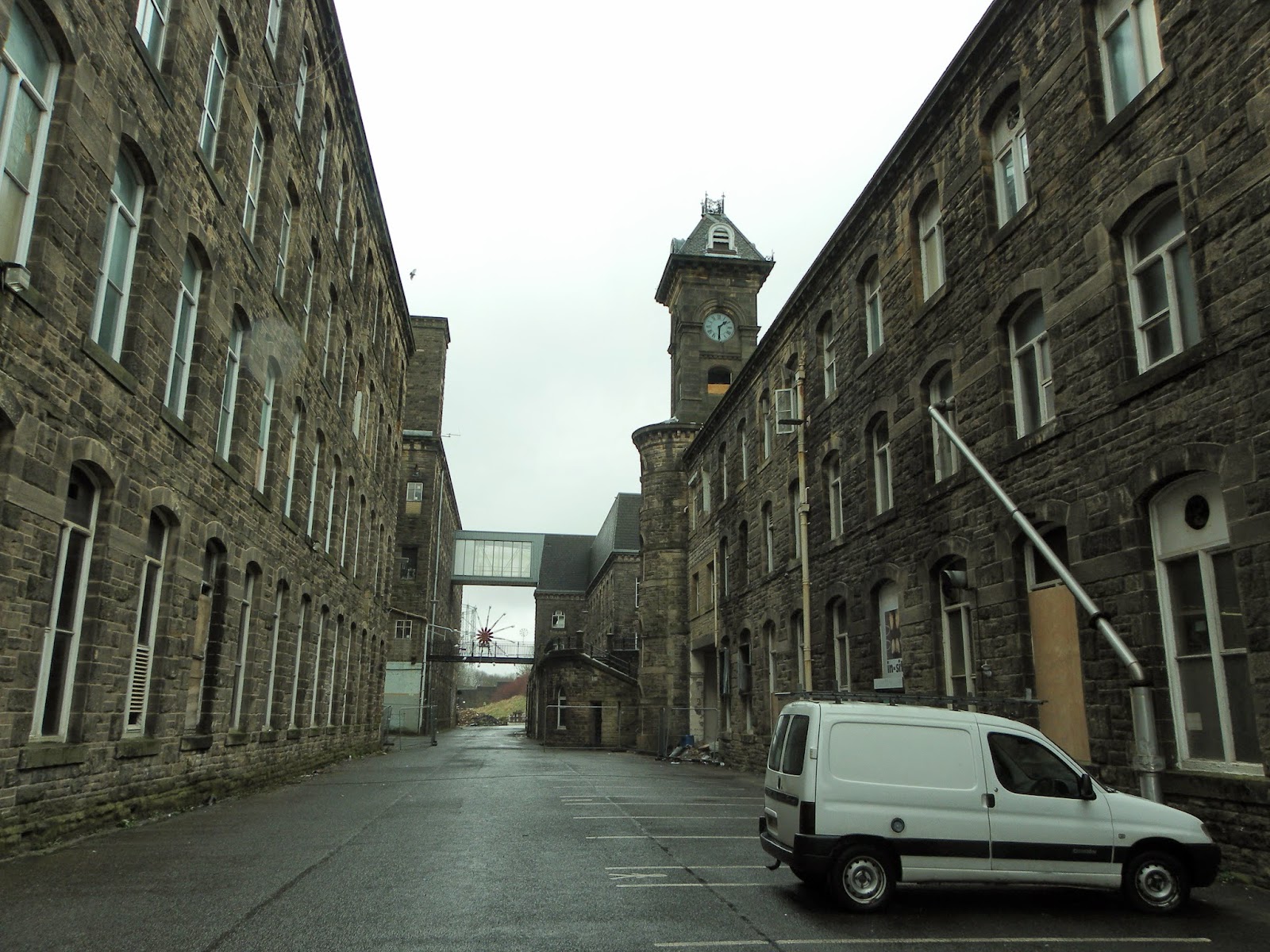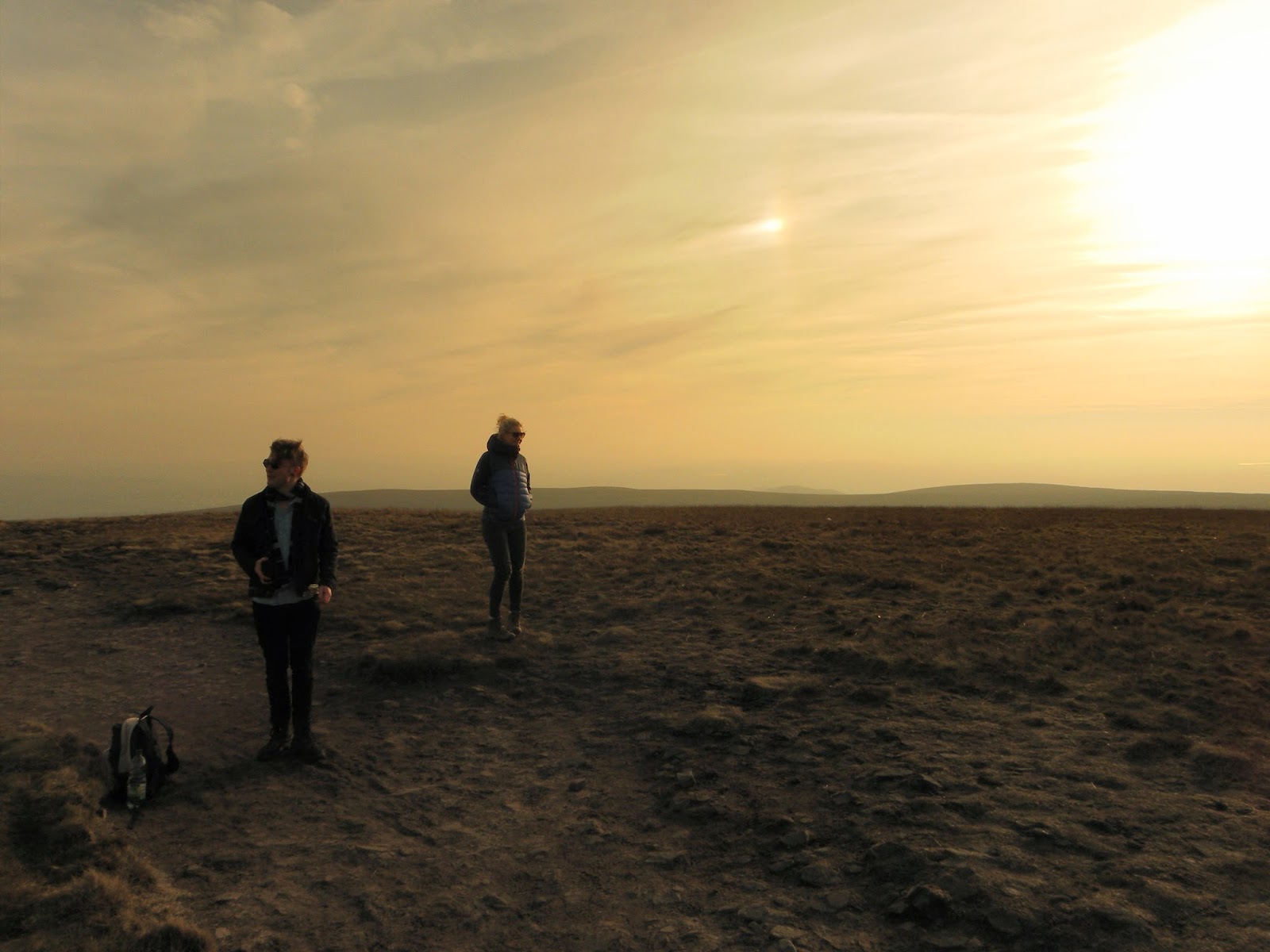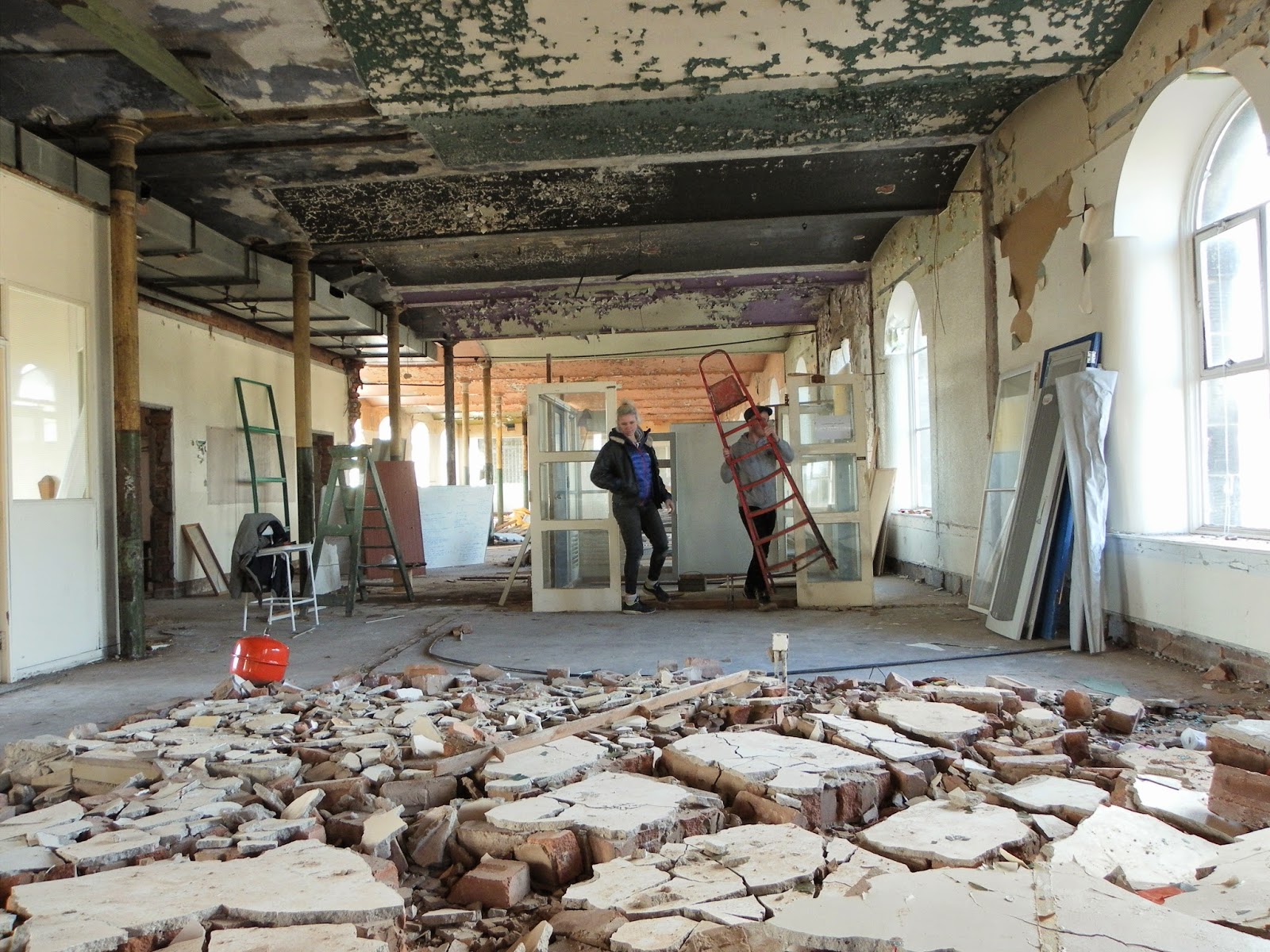On arrival, we headed straight up Pendle Hill to make the most of the Sunday afternoon sunshine:
The In-Situ ethos is based on the concept of artists being embedded in their local community, being 'in the mix' and being just part of ordinary community life like the baker or the newsagent. Artists don't have all the answers but they have a contribution to make. In-Situ has a space/office/exhibition area in Brierfield Library and is also located in Brierfield Mill. They offer funded artist residencies of various lengths for artists to come and work in the area. They don't 'deliver community art' or 'run community workshops' or 'work in community settings' - they just do their work as artists, within the community they are part of. I find this really refreshing.
 Elly had invited us up to be part of a 'test run' for a project she is planning for later in the year at Brierfield Mill. The Mill is immense. There are two huge buildings, each with four floors. At its height there were thousands of cotton looms running here and when it finally closed down in 2006 it was a severe blow to local employment.
Elly had invited us up to be part of a 'test run' for a project she is planning for later in the year at Brierfield Mill. The Mill is immense. There are two huge buildings, each with four floors. At its height there were thousands of cotton looms running here and when it finally closed down in 2006 it was a severe blow to local employment. Five of us spent a morning just exploring all the spaces in the mill.
 |
| Red shoe installation at Brierfield Mill - Elina Chavet |
Then in the afternoon we chose one space and worked collaboratively to make something. The room was massive, with a twelve-second echo. Jamie, one of our number started working with the constant rainwater drips which were a feature of the room. (The gigantic roof sheds about 20 tonnes of rainwater a day, on average). By setting up objects under each drip, the space was soon filled with an orchestra of raindrops all at different pitches and timings. It was quite magical. We also used objects and feet to print/paint rainwater patterns on the vast concrete floor and make sound recordings.
In the next room, Jamie and I found a sheet of plastic film and made a quite traditional drawing with Posca pens.
 |
| Rain-powered battery-charging turbine made by Paul the resident genius. |
 |
| A collection of all the keys found laying around Brierfield Mill after it had been abandoned. |
At the end of the day we retired to 'The Shop' in Nelson, where we discussed our impressions of the place, our reflections on the activities of the day - and filled an A1 sheet with ideas of what we would like to do with the place the next day.
By a democratic process involving each ticking our five favourite ideas, we settled on 'building a house' as our main project for the next two days. And so we did. Using the enormous amount of scrap materials laying about in the derelict mill, a couple of hammers and a few nails, we constructed a house within the mill.
After a day we had four walls and a door in place. I had to leave the next morning but the rest of the team managed to get the roof on and complete the house.
Reflecting on the project, I was trying to reconcile what we had done together with my practice as an artist. Was this art? Did it matter if it was art, or not? Had we built a microcosm of the role of art in late-capitalist society? If the mill represent the crumbling ruins of a manufacturing-based economy did our intervention represent artists' contribution - making something new out of the rejected materials of a wasteful society, or maintaining cultural output, like the orchestra playing while the Titanic sank?
I am not particularly interested in whether or not it was a work of art. It was an experience and we were the audience and collaborators in bringing something into existence. Maybe we just spent two days playing at making dens. We also spent two days getting to know and trust each other, building relationships that will still stand once the mill is regenerated and the 'house' is no more. We developed a process and way of working. We exchanged ideas and experiences, explored our motivations for making art and for being in this place at this time. We grew to love Brierfield, and In-Situ, and ate a lot of amazing curries. It was an experience I will never forget. Bring on the next project.























